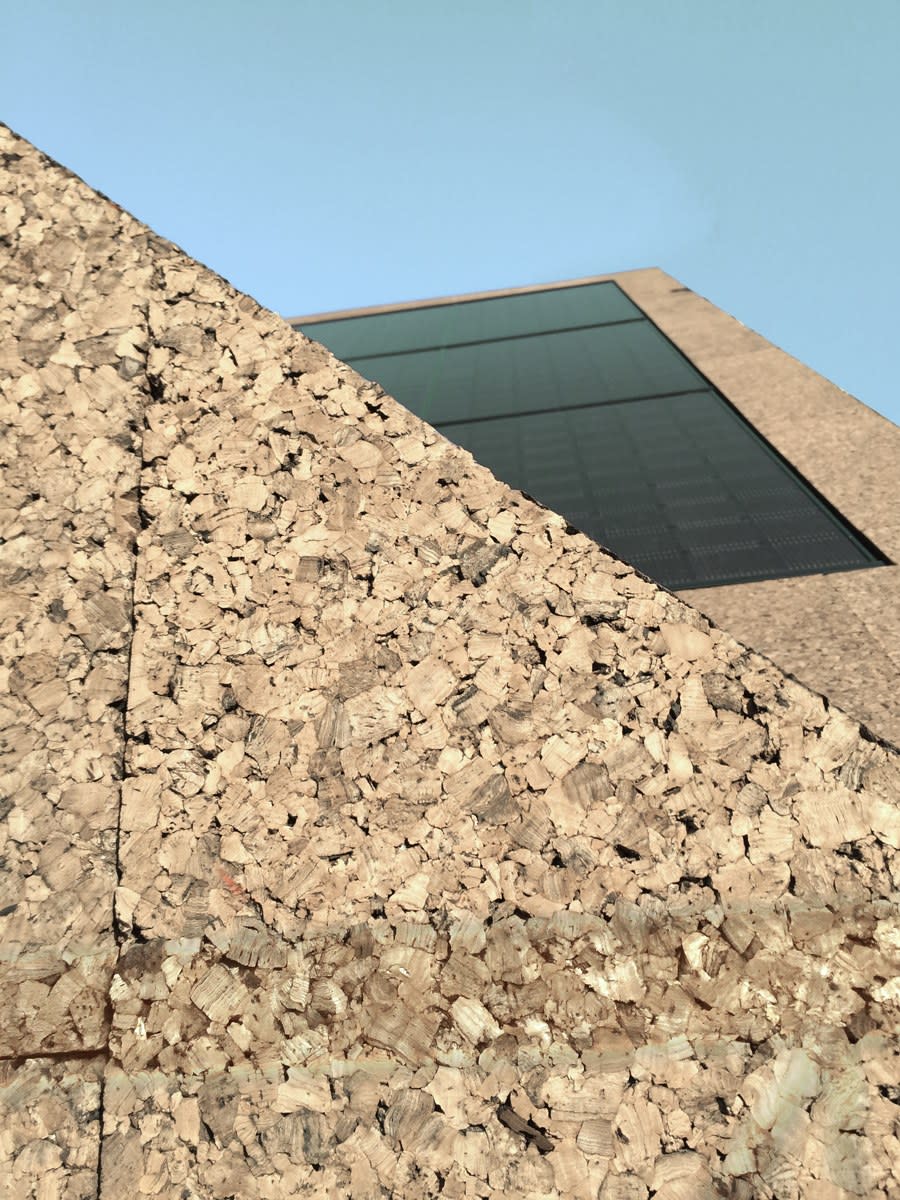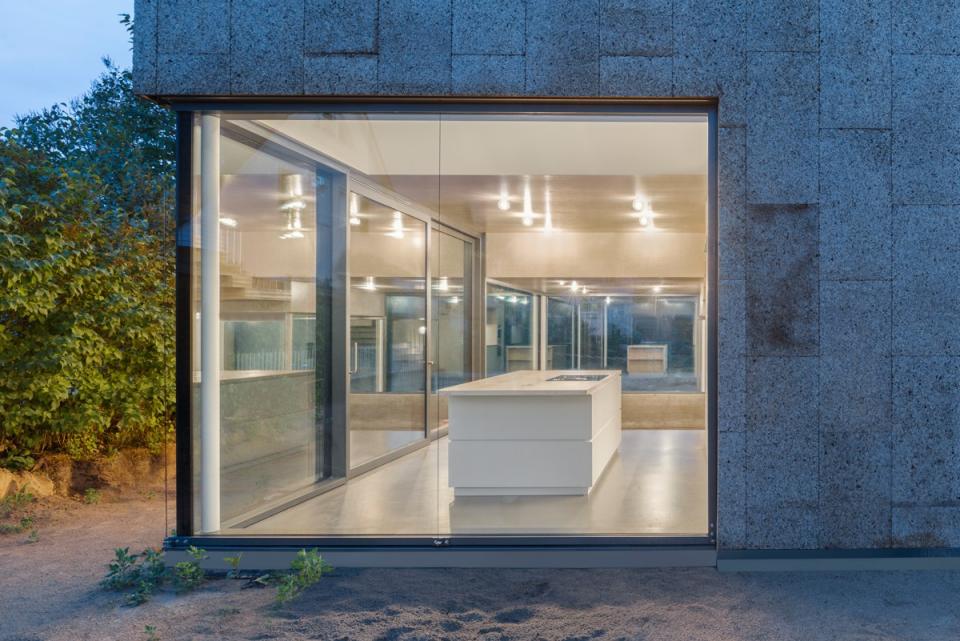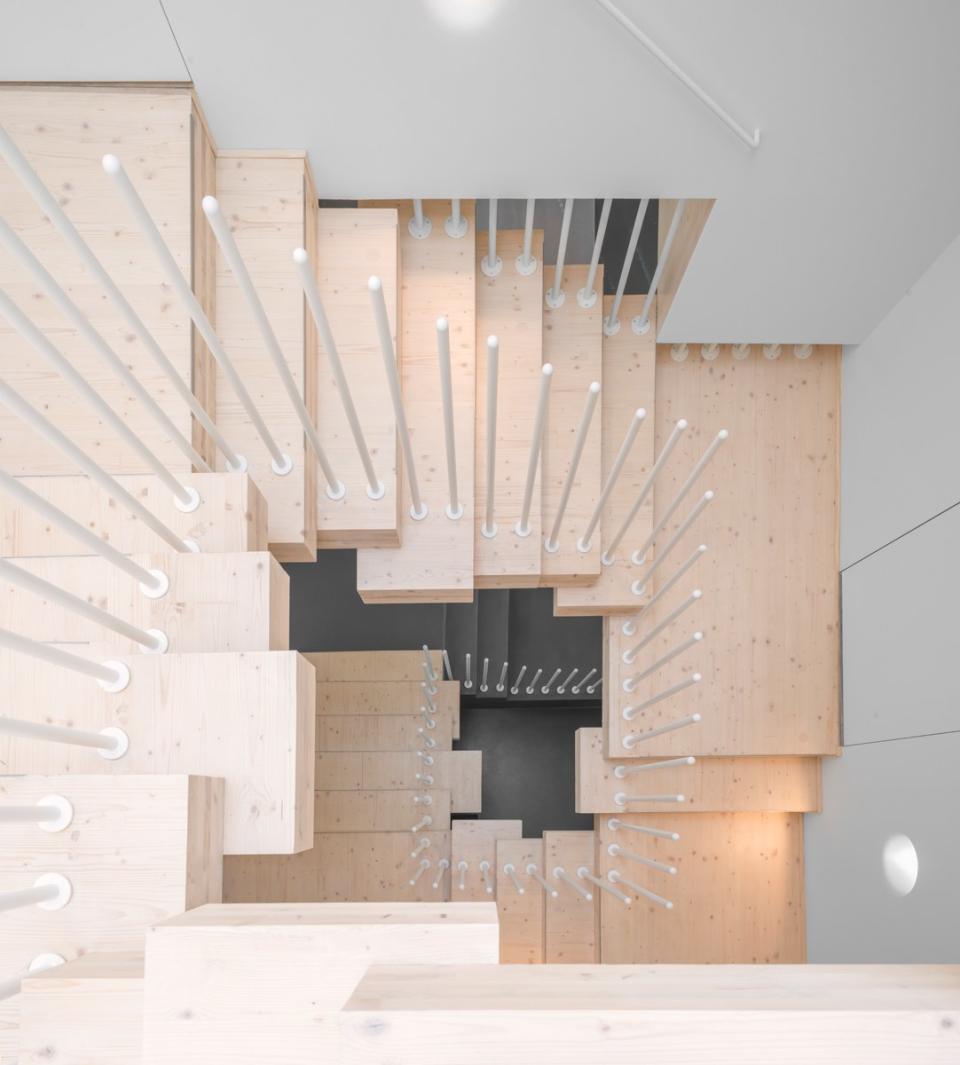This Berlin Home Is Clad Entirely in Cork
Cork, the material so long associated with bottle stops and bulletin boards, is finding increasingly widespread—and inventive—application in architecture. True, cork has long been used in buildings, but most often invisibly so, as an insulating element wedged beneath floors and tucked behind walls. But thanks to an innovative cohort of architects committed to investigating the possibilities of the material, cork is finding greater prominence as an architectural element in a starring role.
To meet with one of those architects exploring cork, AD traveled to Berlin to visit the studio of Rundzwei, the architecture firm behind the Cork Screw House, a single-family residence clad entirely in cork. Working in a neighborhood lined with traditional houses, the architects (and client) at Rundzwei wanted something contemporary and unique. Inspired by its sculptural possibilities, the designers turned to cork. As founding principal Andreas Reeg explains, “By making the roof and the façade all the same material, it looks monolithic, like it was carved out of cork.”

Not only does the material carry a visual appeal, it also produces a full range of sensory effects. “I was amazed how it feels and smells,” says Reeg. “And then, when it rains, it changes color, creating different effects in different weather conditions.” Though cork has much to offer in terms of architectural form, its biggest appeal may be in its environmental performance. Once they are sufficiently matured (at about 25 years old), cork trees can be harvested every nine years for the life of the tree—which can be approximately 250 year—allowing the material to regenerate itself naturally. Once in place, cork continues to perform, offering acoustic and weather insulation and a natural vapor barrier. “It is a perfectly sustainable material,” says Rundzwei’s other founding principal, Marc Dufour-Feronce.

Because it is sustainable, lightweight, and eminently shapeable, furniture designers have been turning to cork, too. The Campana Brothers, for example, recently designed a line of chairs and cabinets made almost exclusively with cork. And this summer, Kasmin Gallery in New York is showing a new collection of work by British designer Jasper Morrison that is made entirely of cork.

The Portuguese company Amorim, a major producer of cork, considers the environmental argument for cork even more broadly. “The sustainability of cork goes well beyond just the fact that we don’t cut down trees,” says one of the company’s directors, Carlos De Jesus, pointing to the fact that forests that supply cork help manage water cycles in otherwise arid climates, increase biodiversity, and supply agricultural jobs. Referring to the flooring used in Fallingwater, De Jesus says, “Frank Lloyd Wright was really on to something.”
Originally Appeared on Architectural Digest

